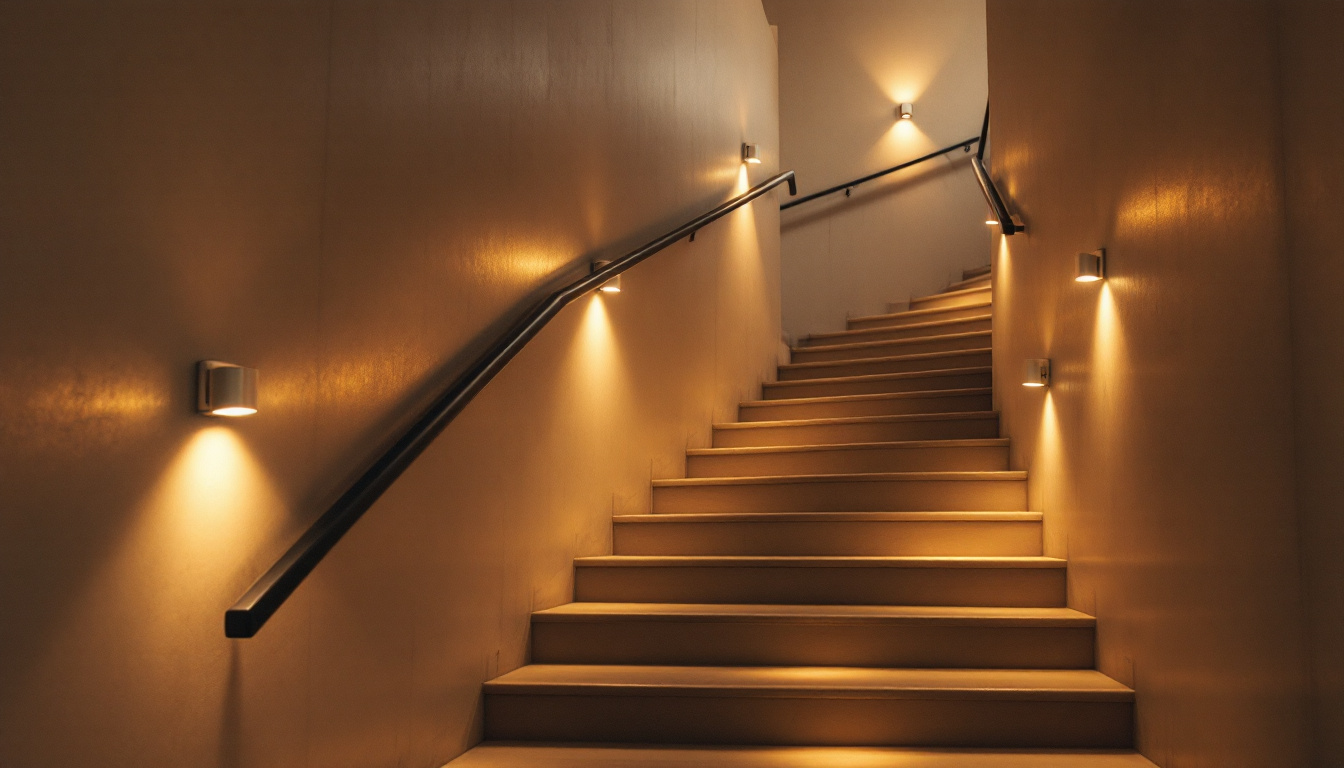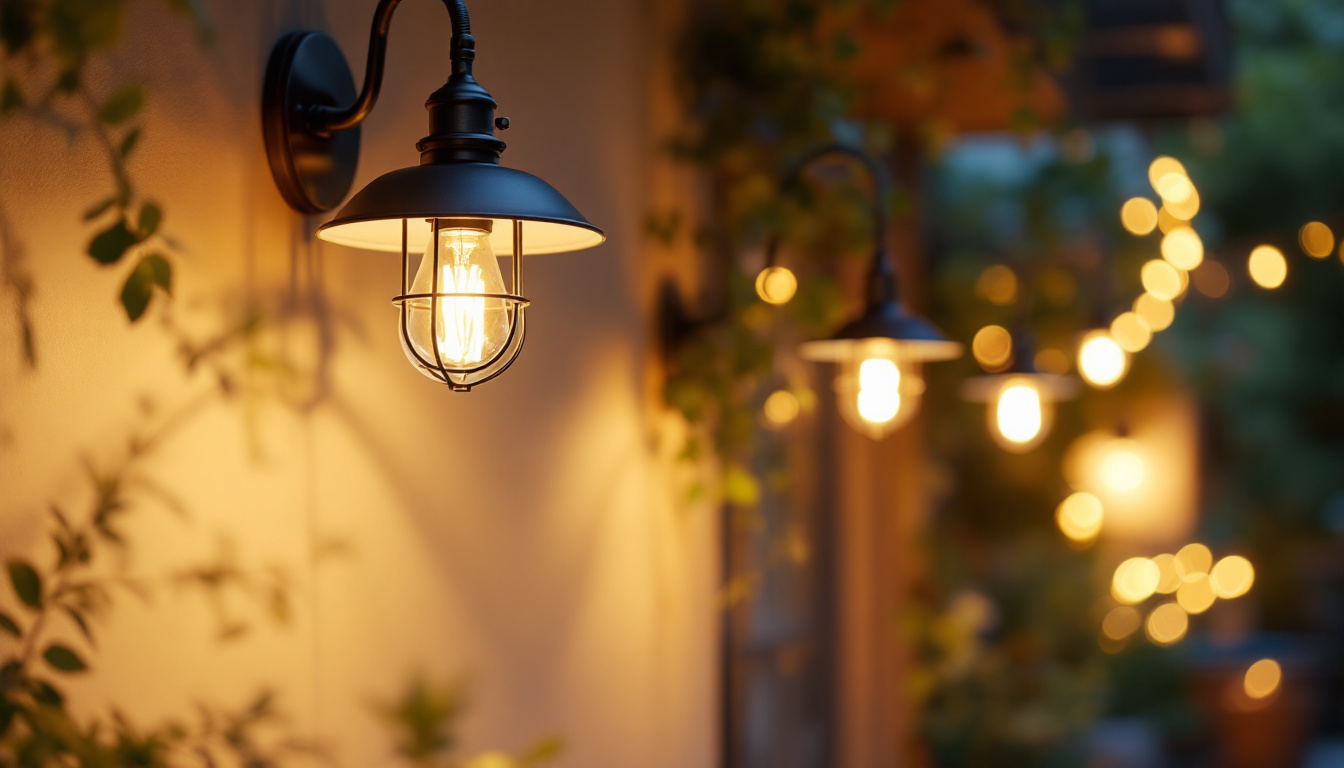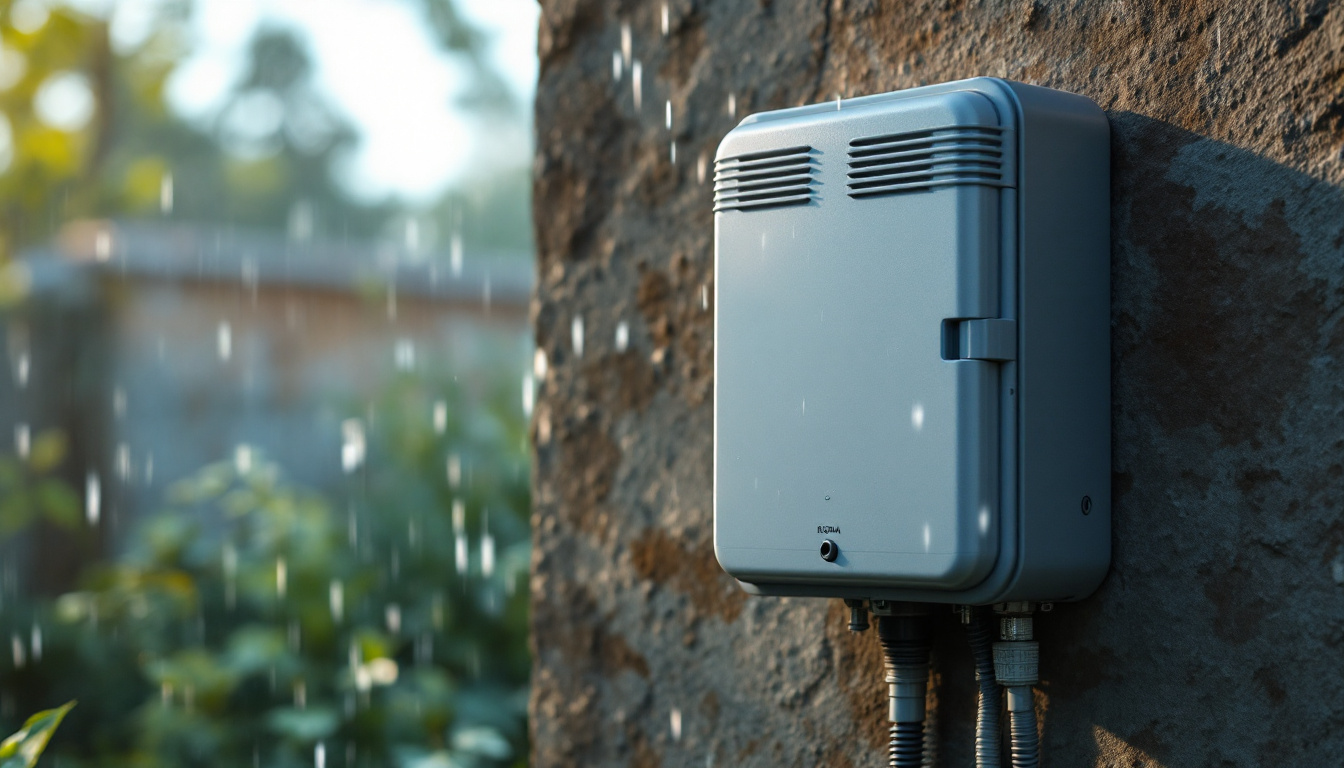
Lighting plays a crucial role in enhancing safety and aesthetics in various environments, and stairwells are no exception. For lighting contractors, understanding the nuances of stairwell lighting, particularly with LED technology, is essential. This handbook aims to provide comprehensive insights into LED stairwell lighting, covering design considerations, installation techniques, and maintenance practices.
Stairwells are often overlooked in terms of lighting design, yet they are critical spaces in both residential and commercial buildings. Proper lighting in stairwells not only ensures safety by reducing the risk of accidents but also contributes to the overall ambiance of the environment.
Inadequate lighting can lead to dangerous situations, particularly in emergency scenarios where visibility is paramount. Moreover, well-lit stairwells can enhance the aesthetic appeal of a building, making it more inviting and pleasant for occupants and visitors alike. The choice of lighting can also reflect the building’s identity, setting the tone for the experience that individuals will have as they navigate through the space.
Safety is the primary concern when it comes to stairwell lighting. The goal is to provide consistent illumination that minimizes shadows and highlights potential hazards. The Illuminating Engineering Society (IES) recommends specific lighting levels for stairwells, which should be adhered to in order to meet safety standards.
Additionally, emergency lighting should be integrated into the design to ensure that stairwells remain illuminated during power outages. This can be achieved through battery-backed LED fixtures that activate when the main power supply fails. Furthermore, incorporating motion sensors can enhance safety by ensuring that lights are activated when someone approaches the stairs, providing an added layer of security and convenience, particularly in buildings with low foot traffic during certain hours.
Beyond safety, the aesthetic aspect of stairwell lighting cannot be ignored. A well-designed lighting scheme can transform a mundane stairwell into a visually appealing feature of a building. Using LED fixtures, contractors can create dynamic lighting effects that enhance architectural elements and improve the overall user experience.
Color temperature and fixture design play significant roles in achieving the desired ambiance. Warmer color temperatures can create a welcoming atmosphere, while cooler temperatures may be more suitable for modern or industrial designs. Additionally, the use of decorative light fixtures can serve as a focal point, drawing attention to the stairwell and making it a memorable part of the building’s interior. Incorporating elements such as wall sconces or pendant lights can also add layers of depth and interest, allowing for a unique expression of style that complements the overall design theme of the space.
When selecting LED fixtures for stairwell lighting, several factors come into play, including brightness, color temperature, and energy efficiency. Understanding these elements will help contractors make informed choices that meet both functional and aesthetic requirements.
The brightness of LED fixtures is measured in lumens, and selecting the right lumen output is crucial for effective stairwell lighting. Generally, a minimum of 100 lumens per square meter is recommended for stairwells, but this can vary based on the specific application and design.
Contractors should also consider the distribution of light. Fixtures that provide even illumination across the stairwell are preferable to those that create hotspots or shadows. This can be achieved through the strategic placement of multiple fixtures or by using fixtures with a wide beam angle. Furthermore, integrating dimmable options can enhance flexibility, allowing for adjustments based on the time of day or occupancy levels, thus optimizing energy use while maintaining safety standards.
Color temperature is another vital consideration when selecting LED fixtures. Measured in Kelvin (K), it affects the mood and perception of a space. For stairwells, a color temperature between 3000K and 4000K is typically recommended, as it provides a balance between warmth and clarity.
Warmer tones (around 3000K) can create a cozy atmosphere, while cooler tones (around 4000K) offer a more modern and clinical feel. The choice ultimately depends on the overall design theme of the building and the intended user experience. Additionally, it’s worth noting that the perception of color temperature can be influenced by surrounding materials and colors; thus, testing different fixtures in situ can yield the best results for achieving the desired ambiance.
One of the significant advantages of LED technology is its energy efficiency. LED fixtures consume significantly less power than traditional incandescent or fluorescent lights, leading to reduced energy costs over time. Additionally, they have a longer lifespan, which translates to lower maintenance costs.
When selecting LED fixtures, contractors should look for products with high efficacy ratings (lumens per watt) and consider options that are ENERGY STAR certified. This not only ensures quality but also aligns with sustainability goals that many clients prioritize. Moreover, the integration of smart lighting controls can further enhance energy efficiency by allowing for automatic adjustments based on occupancy or daylight levels, contributing to a more sustainable and cost-effective lighting solution. Such systems can also provide valuable data analytics, helping facility managers optimize lighting usage and reduce overall energy consumption even further.
Creating an effective lighting layout for stairwells involves careful planning and consideration of various factors, including fixture placement, spacing, and control systems. A well-thought-out design can significantly enhance both safety and aesthetics.
The placement of fixtures is crucial in achieving optimal illumination. Fixtures should be installed at regular intervals along the stairwell to ensure even lighting. Typically, placing fixtures every 6 to 8 feet is recommended, but this can vary based on the specific design and height of the stairwell.
It’s also essential to consider the height at which fixtures are mounted. Mounting fixtures too high can lead to inadequate illumination on the stairs, while fixtures mounted too low may create glare. A balance must be struck to achieve the best results.
Spacing between fixtures should be calculated based on the lumen output and beam angle of the selected LEDs. A wider beam angle allows for greater spacing between fixtures, while narrow beam angles may require closer placement to avoid dark spots.
In addition, contractors should evaluate the layout of the stairwell, including landings and turns, to ensure that all areas receive adequate light. This may involve using different types of fixtures or varying the spacing to accommodate architectural features.
Incorporating control systems into stairwell lighting can enhance energy efficiency and user experience. Motion sensors are an excellent addition, as they can automatically turn on lights when someone enters the stairwell and turn them off after a designated period of inactivity.
Additionally, dimming capabilities can be implemented to adjust the brightness based on the time of day or occupancy levels. This not only saves energy but also allows for flexibility in creating different atmospheres as needed.
Proper installation is critical to the performance and longevity of LED stairwell lighting. Following best practices ensures that fixtures operate as intended and meet safety standards.
When installing LED fixtures, it is essential to adhere to local electrical codes and regulations. This includes ensuring that wiring is appropriately sized for the load and that connections are secure and weatherproof, especially in outdoor applications.
Contractors should also consider using low-voltage systems where feasible, as these can reduce installation complexity and enhance safety. Additionally, incorporating surge protection devices can safeguard LED fixtures from voltage spikes and prolong their lifespan.
Once installation is complete, thorough testing is necessary to ensure that all fixtures operate correctly. This includes checking for proper illumination levels, verifying that control systems function as intended, and ensuring that emergency lighting activates appropriately.
Commissioning the lighting system can also involve fine-tuning the settings of control systems and adjusting fixture angles to achieve the desired lighting effects. Proper documentation of the installation and testing process is crucial for future maintenance and troubleshooting.
Regular maintenance is vital to ensure the continued performance of LED stairwell lighting. Implementing a maintenance schedule can help identify issues before they become significant problems, ensuring that stairwells remain safe and well-lit.
Conducting routine inspections of the lighting system is essential. This includes checking for any burnt-out bulbs, ensuring that fixtures are clean and free of obstructions, and verifying that control systems are functioning correctly.
During inspections, it’s also important to evaluate the overall condition of the wiring and connections. Any signs of wear or damage should be addressed immediately to prevent further issues.
Common issues with LED stairwell lighting can include flickering lights, inconsistent brightness, and failure to activate emergency lighting. Troubleshooting these problems often involves checking connections, replacing faulty components, or recalibrating control systems.
In cases where fixtures are not performing as expected, consulting the manufacturer’s guidelines can provide valuable insights into potential solutions. Keeping a record of maintenance activities and issues encountered can also aid in identifying patterns and addressing recurring problems.
LED stairwell lighting is an essential aspect of building design that enhances safety, aesthetics, and energy efficiency. For lighting contractors, understanding the intricacies of selecting, designing, installing, and maintaining LED fixtures is crucial for delivering high-quality solutions to clients.
By following the guidelines outlined in this handbook, contractors can ensure that their stairwell lighting projects meet both functional and aesthetic goals, ultimately contributing to safer and more inviting environments. As technology continues to advance, staying informed about the latest trends and best practices will empower contractors to excel in their field and provide exceptional service to their clients.
Ready to elevate your stairwell lighting projects with the finest LED solutions? Look no further than LumenWholesale, where we provide contractors with top-quality, spec-grade lighting products at unbeatable wholesale prices. Say goodbye to local distributor markups and hello to a vast selection of industry-standard lighting that ensures performance and reliability. With the added benefits of free shipping and bulk buying made easy, LumenWholesale is your go-to source for premium lighting at the best value. Don’t compromise on quality or price. Wholesale Lighting at the Best Value is just a click away.

Discover essential tips for lighting contractors to seamlessly integrate outdoor motion sensor switches.

Discover how barn lights can illuminate new business opportunities for lighting contractors.

Discover expert insights from leading lighting contractors on choosing the perfect weather-resistant electrical box.

Discover how 4-foot LED fixtures can revolutionize your lighting projects.